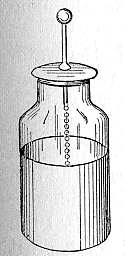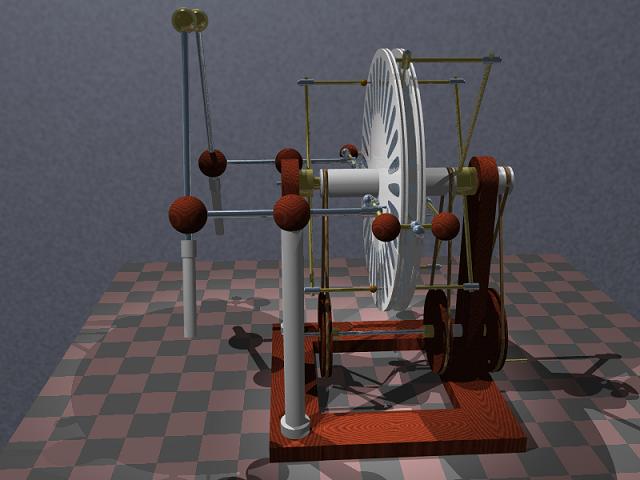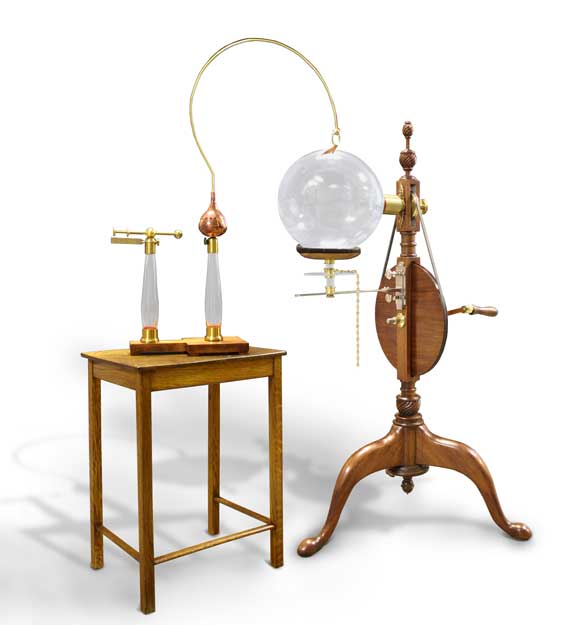 The Leyden Jar
The Leyden JarA leyden jar is made up of a glass jar with an outer and inner coating of metal which covers the bottom and sides of the jar almost up as far as the neck. Sealing the jar is a wooden stopper with a brass rod through the center of it. This brass rod has a ball at the external end of it and connects internally with the metal coating through a loose chain. This is shown in the picture above. When a charge is applied to the knob at the end of the rod, positive and negative charges emerge from the metal coating on either side of the jar. However, they are not able to discharge because of the glass between them. This means that there are two conductors (the metal covering) which are separated by an insulator (glass). As a result, the positive and negative charges hold themselves together in equilibrium until a grounding force is applied. This results in a storage of electricity. To use this electricity, the two conductors must be somehow connected, either with a wire which would allow the use of this electricity, or with a hand which could result in a serious shock. It was the very first capacitor.
The Wimshurst Machine was created by an Englishman named James Wimshurst who was part of the shipping business for the British Board of Trade. Today, however, he is known for his work in improving the Voss’ electrostatic generator. He changed the design so that the disks of the machine contra-rotate. The metal foil portions on the disks induce charges on each other which can be taken off by small, metal brushes and stored within the Leyden jars mentions above. The Wimshurst machine works through the quantum effect in that when two different conducting metals touch each other, a small current is transferred between them because of the different number of electrons in their atoms. This is able to occur on this machine when the sectors in the disk pass through one of the charge neutralizers. Once this occurs, the sector becomes charged and when it passes by a sector on the other side of the disk, it results in an equal and opposite charge on that sector. The front disk has one charge and as it spins, it begins to create a negative charge on the other side of the disk. This also occurs with the lower part of the disks but reverse. Therefore, when the sector passes by the neutralizer bar, it becomes neutral and is ready to be charged again. As a result, there are low and opposite charges on the top and bottom and high and equal charges on the sides. The high charges are then transferred over to the layden jars attached to the machine which are then connected to the discharge terminals. After the voltage builds up, a spark occurs across the terminals and the cycle begins over again. The entire process is demonstrated in the clip listed below:
http://www.wimshurstmachine.com/
Sources:






 The leyden jar was a break through in the storage of electricity. This discovery eventually led to the modern capacitor.
The leyden jar was a break through in the storage of electricity. This discovery eventually led to the modern capacitor.


















